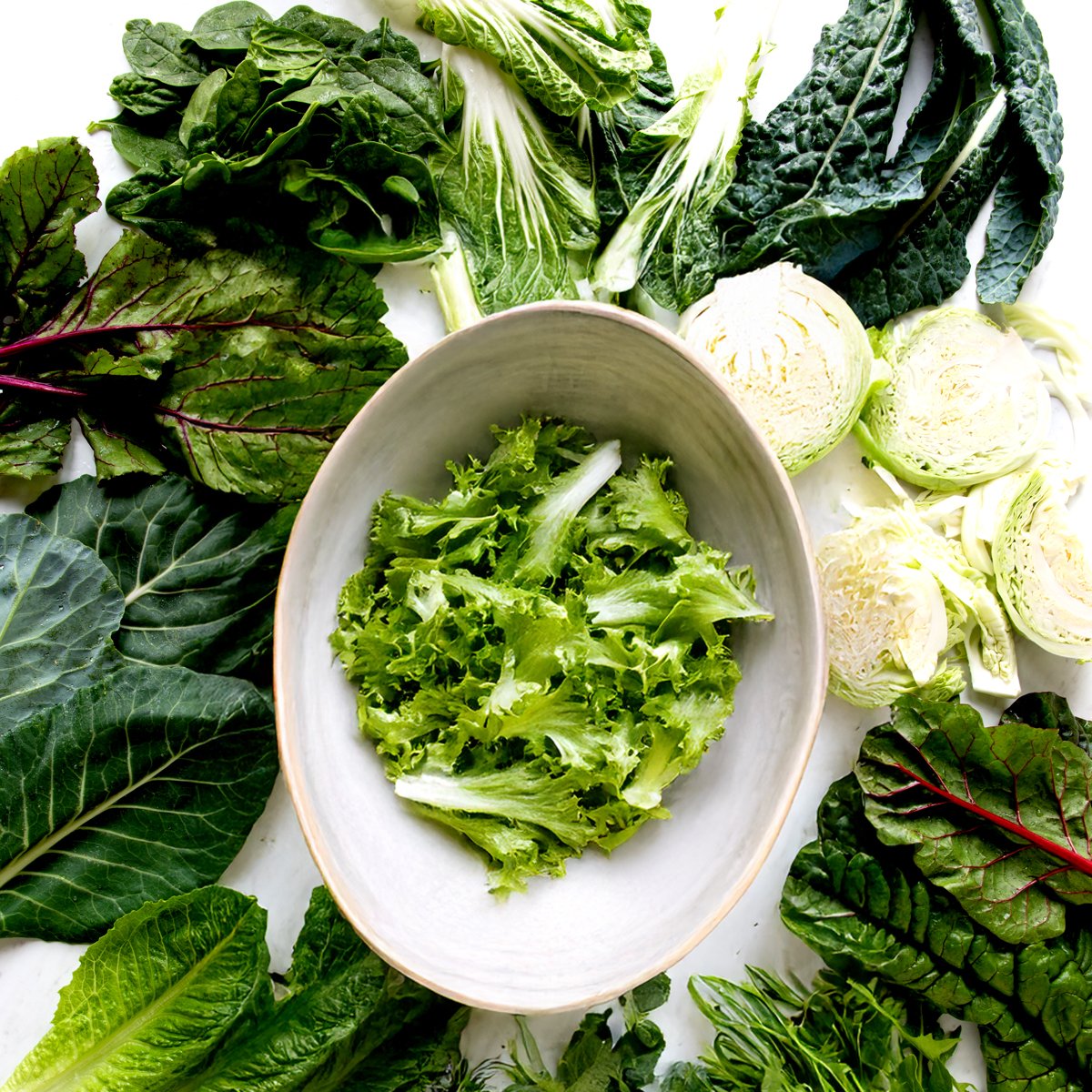
This post may contain affiliate links, meaning I can earn a small commission from items you purchase (at no cost to you).
Table of contents
Step aside salad. You’re no longer the only way to get leafy green vegetables into our diet. The following nutritional powerhouses deserve a starring role in any kitchen— not just for a trained chef. Packed with vitamins, minerals, and antioxidants, leafy greens offer a wealth of health benefits and surprising versatility in the kitchen.
I started my love affair of leafy greens with blending baby spinach into my smoothies. Over time, I started to crave more leafy green vegetables. From vibrant stir-fries to hearty plant-based soups and even delicious green smoothies, it’s time to look beyond the bowl and discover the exciting world of cooking and blending with leafy greens.

Health Benefits of Leafy Green Vegetables
Leafy greens are super important for a healthy diet. They’re nutrient-dense, green veggies that provide tons of vitamins and minerals. According to a report in the journal Neurology, a daily serving of leafy greens can lead to slower age-related cognitive decline. The term “leafy greens” encompasses a wide array of edible leaves, each with its unique flavor profile and texture. Getting familiar with the leafy green varieties is the first step to unlocking their culinary potential.
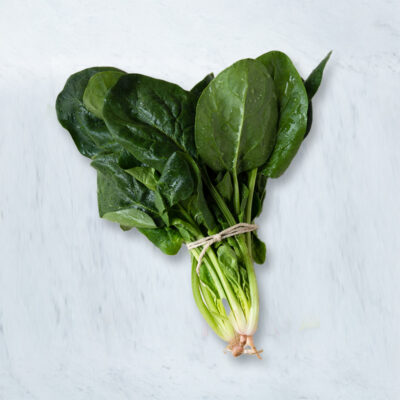
Spinach
Mild & slightly sweet
Spinach is a nutritional powerhouse, packed with vital vitamins (K, A, C), folate, and iron, crucial for bone health, vision, immunity, cell growth, and red blood cell production. Its high antioxidant content and plant compounds may also lower the risk of chronic diseases, making it a valuable addition to a healthy diet.
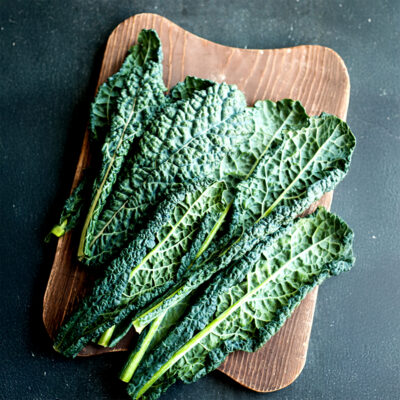
Kale
Hearty & slightly bitter
Kale has different varieties like curly kale, Lacinato (dinosaur) kale, and baby kale offer varying textures. With 684% of the recommended daily value of vitamin K, 206% of the RDV of vitamin A and 134% of the RDV of vitamin C, this dark leafy green packs a health punch.
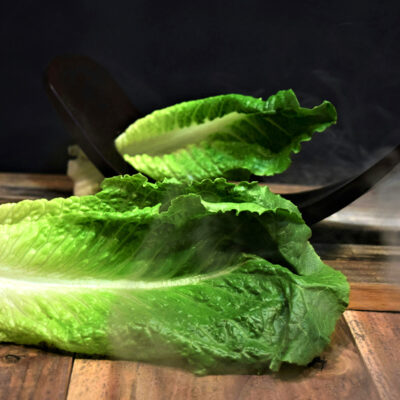
Lettuce (Romaine, Butter, Iceberg)
Mild & slightly sweet
Primarily used raw for salads and wraps, some firmer varieties like romaine can be lightly grilled or braised. Romaine lettuce is high in fiber and low in calories. The vitamin C and beta-carotene content help to lower cholesterol and prevent build-up on artery walls, which reduces the risk of a heart attack.

Arugula (Rocket)
Peppery & slightly bitter
Arugula adds a zesty kick to salads and cooked dishes. More than just a garnish, one cup of this leafy green contains 27.7% of the RDV of vitamin K. Tastes best on top of pizza, in a salad or sandwich. I don’t recommend making smoothies with it.
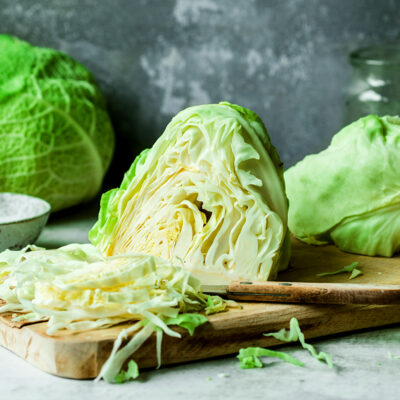
Cabbage
Hearty & pungent
This leafy green can actually be purple, red, white or green, but is definitely still considered a leafy green. I love using cabbage as a plant-based taco shell, blended in a cabbage smoothie or roasted cabbage with light seasoning. Loaded with fiber, folate, vitamin B6 and antioxidants which help fight inflammation.
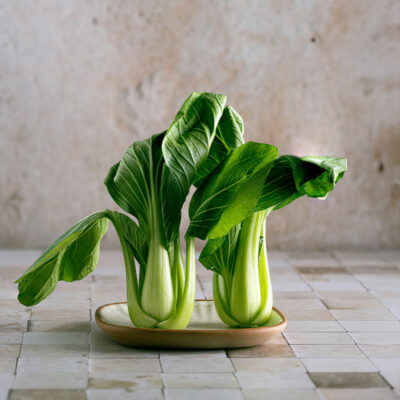
Bok Choy
Mild & slightly sweet
Bok choy is excellent stir-fried, steamed, or added to soups. Full of vitamins A and C, bok choy ranks high for nutrient density as well. All parts of the plant can be used: shredded in a salad, my vegetarian ramen, cooked in soup or blended in a smoothie.
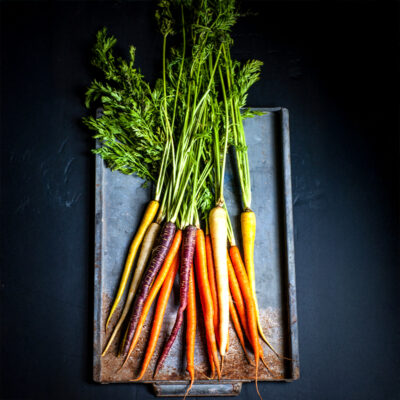
Carrot Greens
Herbaceous & slightly bitter
Carrot tops offer surprising nutrition, providing vitamin K for blood clotting and bones, vitamin C for immunity, and potassium for blood pressure regulation. Their phytonutrients also offer potential anti-inflammatory and antioxidant benefits, making them a worthwhile to smoothies or even pesto!
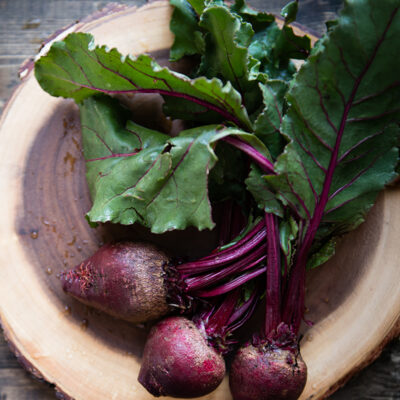
Beet Greens
Slightly earthy
Beet tops are a nutritious leafy green, rich in vitamins K and A, vital for blood clotting, bone health, vision, and immunity. High in phytonutrients, including betalains, beet greens have anti-inflammatory benefits. When blending smoothies with beets, wash and blend in the beet greens.
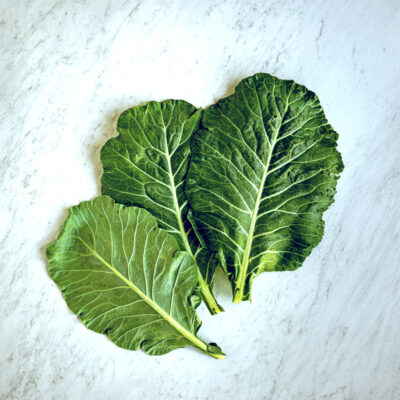
Collard Greens
Tough & slightly bitter
Collard greens benefit from long cooking times. Like their other cruciferous family members, collard greens are great cancer fighters. They are also pretty good at helping your body digest foods properly with all the fiber inside. They are most popular steamed, but adding them raw to your smoothies will provide greater health benefits.
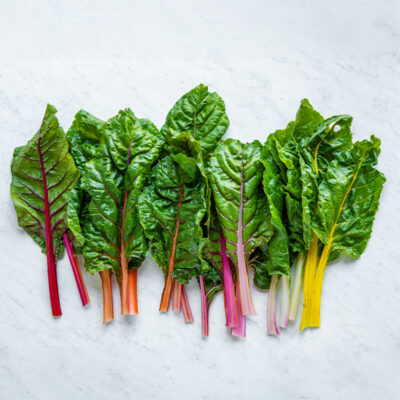
Swiss Chard
Mild & slightly earthy
Mild and slightly earthy with colorful stems that are also edible, Swiss chard is a beautiful and nutritious addition to many dishes. Chard is a colorful, dark leaf known for its ability to regulate the body’s blood sugar. Translation? If diabetes or maintaining blood sugar levels is a concern, add this veggie to your regular rotation.
Leafy Greens Recipes
5 Ways to Use Leafy Greens
Ready to move beyond the traditional salad? Here are some inspiring ways to incorporate more leafy greens into your daily meals:
- Sautéed and stir-fried: Spinach, baby kale, and Swiss chard wilt beautifully in a hot pan with a little olive oil, garlic, and a pinch of salt and pepper. A squeeze of lemon adds brightness. Heartier greens like kale, mustard greens, and bok choy hold up well in stir-fries. Add them towards the end of cooking to maintain some texture and vibrant color. Pair them with your favorite proteins, vegetables, and sauces.
- Soups for warmth and nutrition: Stir in chopped spinach, kale, or Swiss chard during the last few minutes of cooking vegetable soup recipes. They will wilt down and add a boost of nutrients and a touch of freshness. Blend cooked greens like spinach or kale with broth, sautéed onions, and a touch of cream or coconut milk for a smooth and nutritious soup.
- Baked delights with a green twist: Incorporate chopped leafy greens into egg-based dishes like quiches and frittatas. They add color, flavor, and valuable nutrients. Layer sautéed greens into pasta bakes and lasagnas for an extra dose of vegetables. They blend seamlessly with the other ingredients. Add finely chopped cooked greens to roasted root vegetables, or use them as a filling for savory pastries and dumplings.
- Blended goodness in smoothies: Don’t be afraid to toss a handful of spinach or kale into your breakfast smoothie. The flavor is surprisingly mild when combined with fruits, yogurt, and other ingredients.
- Creative raw preparations: While not technically a recipe, juicing leafy greens is a great way to consume a concentrated amount of nutrients. Blend arugula, spinach, or kale with nuts, garlic, olive oil, and lemon juice for a vibrant and flavorful pesto. You can also layer large lettuce leaves like romaine or butter lettuce to create healthy and delicious lettuce wraps and sandwiches.
Benefits of Rotating Leafy Greens
I often talk about rotating your greens when making green smoothies. This is because leafy greens come from all different plant families, each offering different health benefits. Yet if spinach is your jam, no worries! Keep doing that. You can always have a salad with kale or make a soup with Swiss chard.
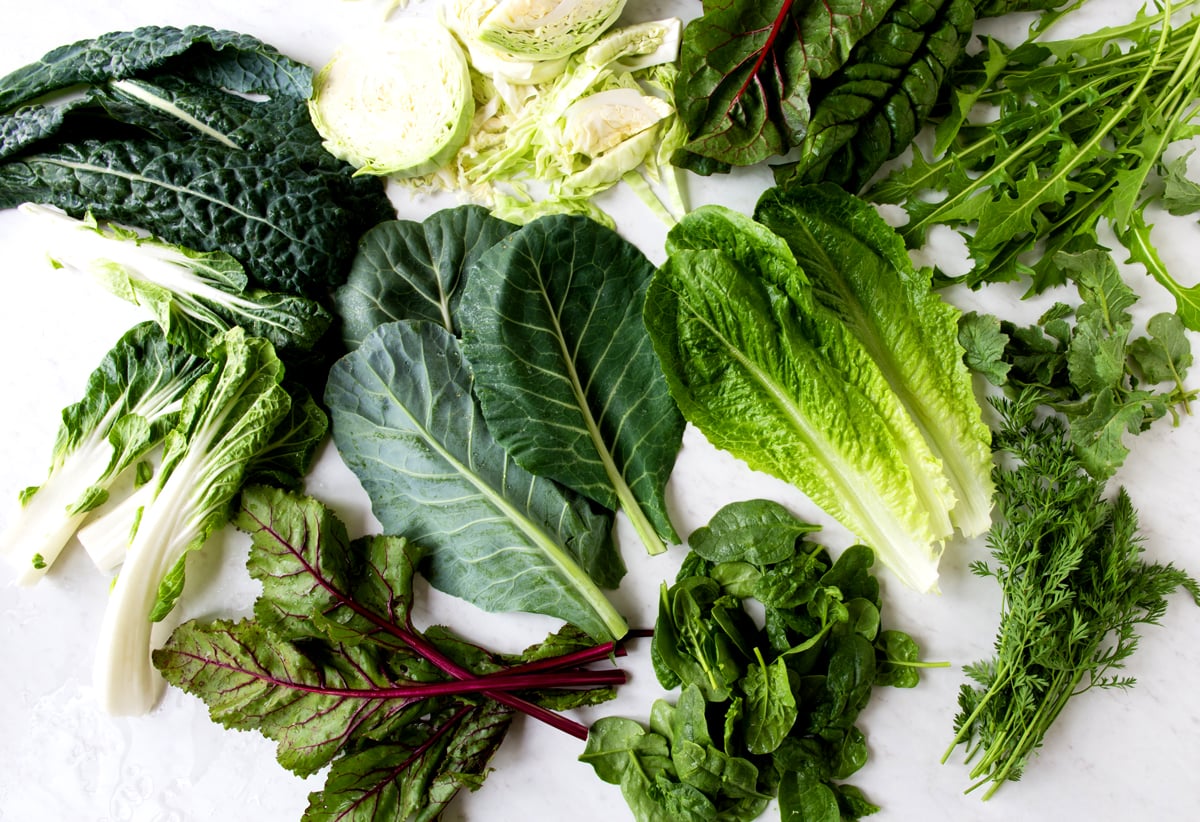
Tips for Cooking with Leafy Green Vegetables
Leafy greens are more than just a salad component. Their versatility and nutritional benefits make them a valuable addition to any healthy diet. By exploring different cooking methods and incorporating them into a variety of dishes, you can unlock a world of flavor and boost your well-being. So, step away from the salad bowl and embrace the green revolution in your kitchen!
- Experiment! Don’t be afraid to try different combinations and cooking methods to discover your favorite ways to enjoy leafy greens.
- Wash thoroughly: Always wash leafy greens thoroughly under cold running water to remove any dirt or grit. A salad spinner can be helpful for drying them.
- Remove tough stems: For heartier greens like kale and collards, remove the tough central stems before cooking.
- Don’t overcook: Most leafy greens cook quickly. Overcooking can make them mushy and reduce their nutritional value.
- Balance flavors: The bitterness of some greens can be balanced with acidic ingredients like lemon juice or vinegar, or by pairing them with sweeter or richer flavors.
What are your favorite leafy greens? Drop a comment below and let me know if this list has inspired you to try a new ingredient, or if you’ve got a new green for me to try!
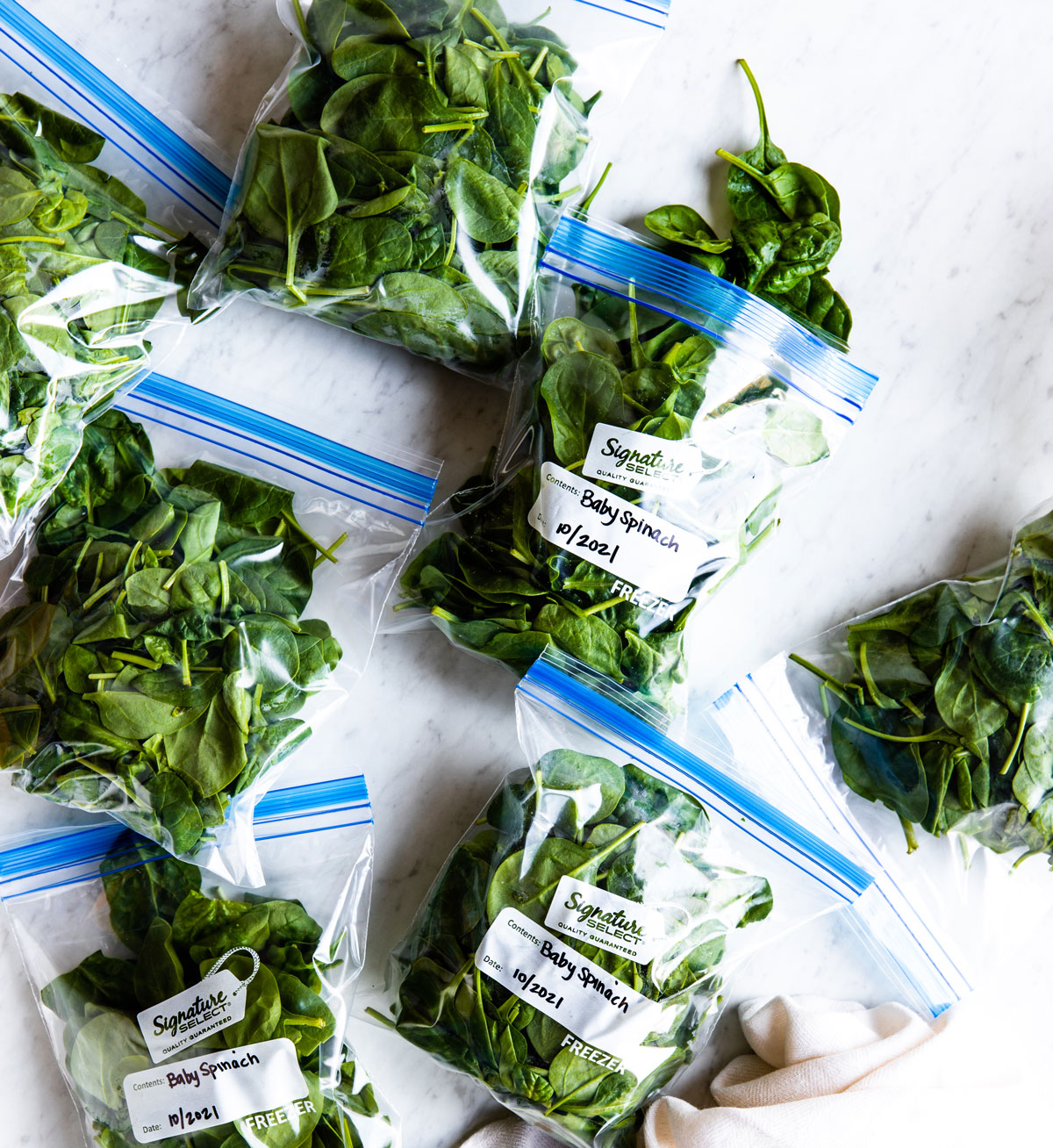
Freezing Your Leafy Greens
Ever wonder how to use up all the beautiful leafy greens you just bought, before they start to wilt? Even though I make green smoothies daily, I sometimes need to freeze my spinach or kale to stay fresh longer.
To lengthen the shelf life of leafy greens and make rotating your greens as easy as opening your freezer, try freezing your spinach. I buy spinach and power greens at Costco— freezing half of it maximizes the freshness.
Common Questions
You’ve probably heard of spinach, kale and lettuce, but leafy greens also include carrot tops, beet greens, swiss chard, arugula and more! They can grow all on their own, or be found on the tops of other plants (like broccoli, beets and carrots).
All leafy greens are incredibly nutritious and great to mix into your diet. Kale and spinach are probably the most nutrient-dense, yet you need a variety of greens (and other fruits and vegetables) for the best health. Don’t be afraid to give a new one a try next time you’re at the store. You might be surprised by mustard greens, bok choy and more!
Greens don’t just take place in salads or garnishes for burgers. You can use them in green smoothies, all kinds of pesto, filling for stuffed mushrooms or potatoes. Pretty much anything you want! Next time you are grocery shopping, grab a new-to-you leafy green and get adventurous with how you prepare it.
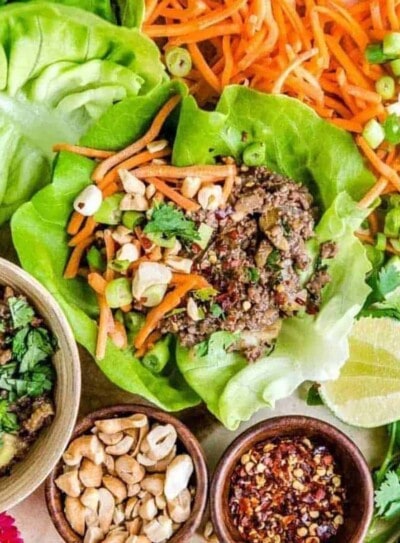
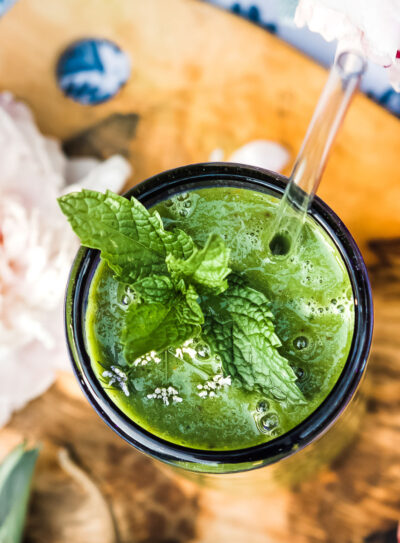

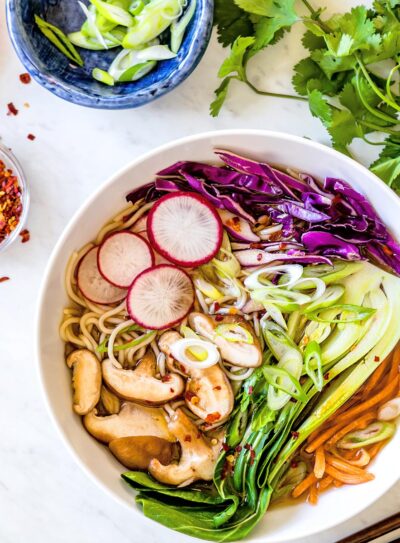
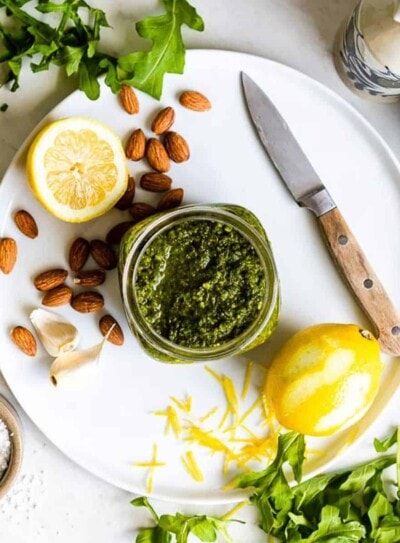
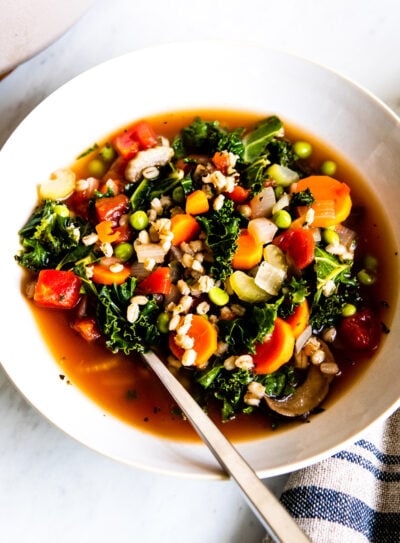
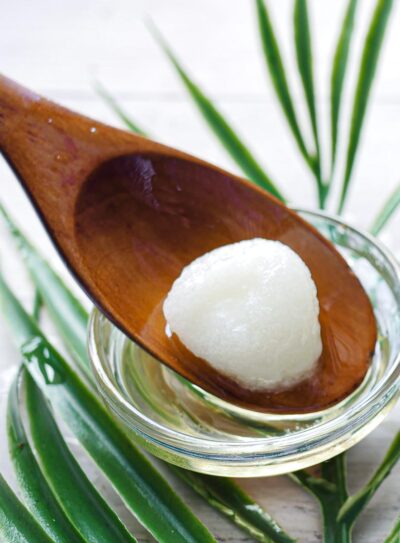
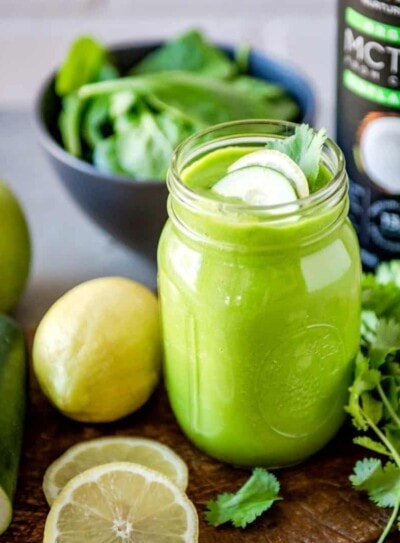
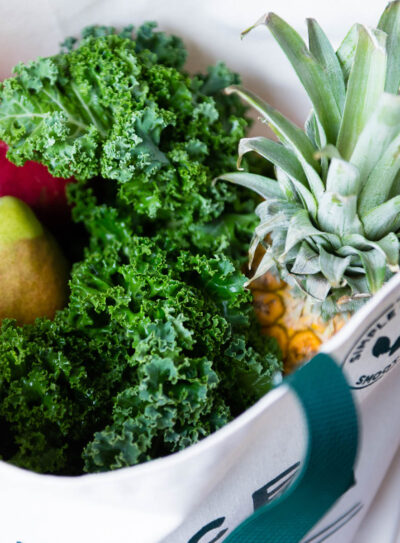


I get the powerhouse greens mix and add spinach before I freeze them. I don’t get tired of my smoothie and actually make mine much thicker because I feel full longer and prefer my Simple Green Smoothies fresh! Thanks for all of the great info and delicious recipes!
Thanks for blendin’ with us, Tiffany! 🙂
I’ve bought a vita-mix blender and followed the recipe for a smoothie (from Ani Phyo). No matter which greens I use, the smoothie is always full of foam and I have to leave it on the counter for several hours before the foam disappears so that I can add more smoothie to my container (which makes 3 cups and I drink all day at work). I love my smoothies but it’s so time-consuming to wait around for the foam to be reabsorbed. Someone said it wouldn’t foam if you use organic produce but my organic still foams. Any suggestions?
Kelly Anderson
Add some avocado! Gives a nice smooth texture and you won’t get any foam.
Hi Kelly,
Vitamix is a powerhouse blender, but all of that power can add extra air to your green smoothie causing them to foam. We suggest once you’ve blended your smoothie, set your blender to its lowest setting for a few seconds to allow your smoothie to settle. You can also try adding healthy fats like avocado or coconut oil to help prevent any foaming.
Hope this helps!
Best informative web site I’ve found. Thanks
YAY!! Thanks, L.Davis! 🙂
Hi,
I hopeu can help I been drinking green smoothies for 1wk, the first 3 full detox of veggies & fruits and 4th onewards slowly eating meat & other carbs.. on the 8th day am starting to get really bad tummy ache plus diarrhea and feels nauseated .. am taking green smoothies with spinach and now and on day 14th it gets better but tummy ache still there.. its like my stomach is rejecting the smoothie now..
Had no problem on the first 5days… am i allergic to spinach??
pls help
Hi Lesley,
This can be a common symptom if your body is not used to drinking or eating lots of fiber. Green smoothies are high in fiber which is great for digestion, but for newbies, the high fiber can shock your body. Make sure you drink lots of water to help flush things out. And if you’re new to green smoothies one serving a day is enough, which is 2 cups (16 ounces).
Hope this helps!
Parsley wasn’t in your groupings – what family is it? I know it’s strong but I like it! Thanks!
Hi AJ,
Parsley is part of Apiaceae group, just like celery + cilantro!
Cheers 🙂
This website, first of all, got me extremely hooked on green smoothies. First thing I did after getting my summer job paycheck, was ordering my own blender for when I am at my dorm!
However, rotating greens has been something I have wondering a lot. Right now, I mostly vary between one week of spinach, one week of kale. I found out rucola (=arugula) is also a good replacement for kale and others, but I just wondered: do I really need to worry about alkaloid buildup if I keep up this system, where I spread about 4 smoothies across the week?
Another question I was wondering about, was about the freshness of for example the spinach. I leave it in the fridge and after a while, it of course starts to degrade a bit. Needs to worry about a few mushier or older leaves?
Thanks again!!!
Hi Didier,
We’re so excited to have you blendin’ with us! Worried about alkaloid build-up? While build-up is rare, it’s something we should be aware of. We suggest rotating between two different leafy greens per week. And then another two different leafy greens the following week. So one week you might buy spinach and kale, and then on your next shopping trip, you might buy romaine lettuce and swiss chard.
We suggest reaching for fresh greens, wilted greens don’t always yield the tastiest results! Finding your greens going bad too quickly? Freezing your leafy greens is a great option to prevent waste + it also great for your wallet! Learn all about freezing your leafy greens here…
https://simplegreensmoothies.com/how-to-freeze-spinach
Gee, thank YOU for that tip! It is masterly thought!!!
Be sure I will be using this one.
Now, to get a bit technical: this week, I bought myself a mélange of greens, that includes baby spinach, some arugula, field salad (flat, super-green leaves), etc etc… What are your thoughts on that, as you are, in my opinion, the Sensei’s of Green Smoothies? 🙂
Hi Didier,
Yum! We love blendin’ different leafy greens together! Way to get a great leafy green nutrition boost!!! We still suggest adding different greens to your smoothies week to week to ensure you’re rotating your greens!
Cheers 🙂
I don’t just put one type of green in my smoothie. I put Kale, Spinach, cabbage, chard, celery, etc and whatever vegie’s I have. If I use a variety of vegies, will it stop the alkaloid buildup?
Hi SKDS,
You’re a leafy green rawkstar! And adding a wide array of leafy greens to your diet will help prevent alkaloid buildup, so keep doing what you’re doing!
Cheers 🙂
I was wondering if emulsification (NutriBullet) reduces the potency or the useable nutrients of greens. I have Googled the question and the matter seems to be unsettled. Some say there is very little reduction and some say the greens must be chewed and swallowed because blending or emulsification destroys the nutrient content. Some sites mention the lack of scientific studies to know which is opinion is true.What is your view?
Hi Mark,
Great question! I believe that Dr. Mercola says that people shouldn’t blend because all the nutrients are lost within 15 seconds, or something like that. We do believe that nutrients begin to “go away” and oxalate, but we don’t believe this happens in 15 seconds. Our stance is that green smoothies stay good for you for up to two days, as long as they are in a sealed container in the refrigerator.
I am so confused about what I’ve been reading with regard to kale – “It causes hypothyroidsim” and so on. It seems that the more I work to improve my diet, the more I seem to read horror stories about all the foods I have been using (qinuoa, raw kale, raw almonds, farro, cruciferous veggies, chia…). How am I to determine how much of what to ingest, how often to ingest it, and exactly how much is too much? Also, how do I measure raw kale? Do I chop it the way one would chop parsley, then measure one cup of the mutilated result? Do I put “x” number of leaves in a smoothie? Should I eat kale every other day, rather than daily? Is it always best to balance a smoothie with a small amount of fruit, a small amount of kale, a bit of celery, a few almonds, one teaspoon of chia seeds…??? I have been making a 32-ounce green smoothie every day for months. Help! How do we sort through all the stuff online about “I ate kale for three days and developed hypothyroidism”, versus “Kale is the super-food of the millenium”? And (sorry about the volume) – is it better to steam kale before putting it in a smoothie?
Thanks so much!
Hi Karen,
Great questions! It’s important to rotate your greens. But to steer people away from consuming healthy amounts of fruits, vegetables, and create fear about eating healthy is sad to hear. There are some people whose bodies don’t respond well to high oxalates (which spinach + kale are known for having), but there are also people who can’t eat bananas, or mango, etc… It doesn’t mean everybody stops eating bananas or mango. It just means those few people who are allergic have to avoid it. Not everyone needs to avoid oxalates in their diet, but if you do, then you find alternatives. You can always check with your doctor to make sure, but it’s best to listen to your body.
Hope this helps!
Cheers 🙂
Please reply to my email. I started with green smoothies and into the 2nd week became extremely constipated and even taking a laxative didn’t help. I had to see my dr and she asked me what greens I used. I told her spinach, chard & kale. At Costco they had all three in a large bag and bought this so I could freeze. She told me kale was my problem because it was hard to digest in the colon and to stop using. Also I saw after 2wks that my almond milk had 2% iron, and my flaxseed has iron and some frozen fruits had iron. I have never been able to take any iron in vitamins because it would make me constipated. Just recently at health food found coconut milk with no iron. Sweet and unsweetened. Use this now along with coconut water.
Do you know of kale being hard on people. My dr’s MA told me she had a lot of gas with kale. Also forgot to mention I became so bloated and I am petite. My stomach had horrible pains.
I do not want to give up on making smoothies and she my dr told me spinach is good plus avocado. In 8 months my HDL & LDL cholesterol levels dropped so low and she told me it was the avocado which did this.
My question is chard also constipating. What are some greens I should avoid??? Please help I don’t want to give up my smoothie
Extremely grateful for your advice.
Helen
Hi Helen,
Thank you so much for reaching out! Everyone’s body is different, so everyone’s body + digestion reacts differently to new leafy greens. We’re so sorry to hear you were left bloated + constipated from blending with kale, next time you come across a kale recipe simply swap out kale for another leafy green you + your body enjoys more! Sensitive to iron, definitely skip almond milk for coconut milk, water, coconut water, or another low-iron liquid base option!
Next time your stomach isn’t feeling its best, reach for ginger! Two compounds found in high concentration in ginger, gingerol and shoga, may help the entire digestive tract to relief any discomfort from gas, constipation, diarrhea, and bloating. Here are a few of our favorite ginger recipes, it also adds a great spice to any green smoothie recipe…
https://simplegreensmoothies.com/honey-turmeric-smoothie
https://simplegreensmoothies.com/strawberry-watermelon-smoothie
https://simplegreensmoothies.com/recipes
Cheers to a lower HDL & LDL, RAWK ON!!
Have you ever tried cauliflower greens? I’m out of everything in the house but have those in the garden.
Hi Kirsten,
You can absolutely blend cauliflower greens!!! You’ll find the cauliflower leaves a little bit firm and that they have a stronger taste than kale.
Reach back out + let us know how you enjoyed blending with the cauliflower greens.
Cheers 🙂
If I was to substitute cilantro for a green do I use the same amount? Thanks!
Hi Jennifer,
Looking to sub cilantro in one of our recipes? Check out our article on using herbs in your smoothies: https://simplegreensmoothies.com/fresh-herbs
Hello! Can I freeze greens like carrot tops, cabbage and herbs to use throughout the winter in smoothies?
Hi Bryn,
Of course! We love freezing leafy greens, it’s a great way to stock up when our favorites are in season, or even better on sale! Check out our favorite tips here…
https://simplegreensmoothies.com/how-to-freeze-spinach
I have thyroid issues and have to severely limit raw cruciferous vegetables. Cooked are on. Are cooked greens any good in smoothies?
Hi Karen,
We prefer to blend with raw leafy greens, but its worth a try to meet your dietary needs!
Good Morning! I’m confused. Again. I heard a nutritionist on the radio suggest dipping kale leaves in boiling/hot (?) water before using them in smoothies to get the best nutritional value out of them. What do you think Rawkers? I imagine it would make the older kale leaves a bit more compliant with the blender if you left them in there long enough.
Thanks!
Hi Sue,
We love our kale raw! If you find kale in its natural state tough, fibrous, and a little bitter, try massaging your kale! You can search online for more info. 🙂
I heard that if u drink to much green smoothies that u can have high oxalate levels in the body is that true.
Hi Tiffani,
That’s true! There are some people who’s bodies don’t respond well to high oxalates (which spinach is known for having), but there are also people who can’t eat bananas, or mango, etc. It doesn’t mean everybody stops eating bananas or mango. It just means those few people who are allergic have to avoid it. Not every one needs to avoid oxalate in the diet, but if you do, then you find alternatives to spinach. That’s why we think it’s important to rotate our greens between different leafy green families! You can always check with your doctor to make sure, but it’s best to listen to your body.
Cheers 🙂